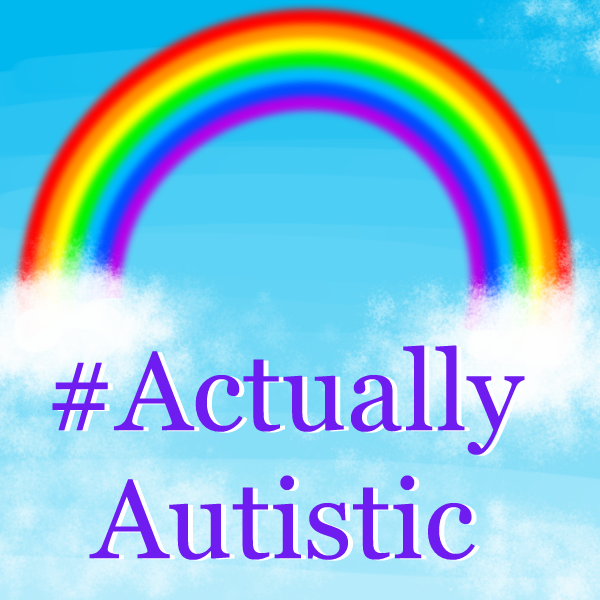You know the saying “if you’ve met one…” whoever? Well, if you’ve met one autistic person, you’ve met one autistic person. Not to say that autistic people are snowflakes, but every one has a very unique set of lived experiences. While representation is improving, the common or popular image of an autistic person (or a person with autism, depending on where you stand with that debate) is usually defined by misrepresentations, oversimplifications or inaccurate portrayals by the media — often representing autistic adults as childlike or a “savant” which is exceedingly rare, even in the autistic community. Also, much that we know about autistic life comes from those neurotypical people that support or interact with neurodivergent people showing autism through the lens of the hardship that it places on caregivers and family rather than how it feels to actually be autistic. Through that lens, autism is seen as an inconvenience to the world rather than how the world affects the person on the autism spectrum.
It’s so important to have representation from many different people of what the autism experience actually feels like for them. Having a diversity of autistic characters in media means that autism will be better understood in society at large. A better understanding of autism means it is safer for autistic people to acknowledge their autism. And when autistic people can live authentically autistic lives, they can flourish. There is currently a paradigm shift happening in the autism community to center people with the hashtag #ActuallyAutistic.
In their new book “I Will Die on This Hill,” Meghan Ashburn and Jules Edwards try to reconcile the community of parents and friends of children with autism with the “actually autistic” community of autistic adults. Parents may feel attacked for not understanding what their children are feeling and going through while the autistic adults that these children become feel unheard and rejected. When the two authors first met, their relationship was an adversarial one. But together, they bring ideas, resources and plausible solutions on how we can all better connect and work together to improve the lives of autistic people — both children and adults. This book asks you to challenge your biases and ego in order to ‘bridge the gap’ and unite in support.
Actor (and now author) Mickey Rowe is known for being the first autistic actor to play the lead role in the play “The Curious Incident of the Dog in the Night-Time” based on the book by Mark Haddon. Rowe’s new book, “Fearlessly Different: An Autistic Actor’s Journey to Broadway’s Biggest Stage,” tells his story of how his life works and works well — not in spite of his autism but because of it. Oh, and he’s also legally blind so doubly disabled by society’s standards. Rowe guides the reader through his world and his struggles to overcome the prejudices embedded in our deeply ableist society. He provides a much-needed window for the neurotypical reader and a way to be seen and heard for the neurodivergent reader. In his own words, “People want so desperately to fit in that they forget what makes them stand out. Be loud. Take up space. Our differences are our strengths.”
In her book, “Unseelie,” Ivelisse Housman brings autism into the fantasy world with an autistic main character. Seelie is a changeling who finds it difficult to fit in with the humans that surround her, unlike her human twin sister, Isolde. When her magic begins to make an appearance, breaking through at unexpected times, it causes people to fear her, making life even harder for Seelie. The two sisters go on a quest to find wealth enough to lift them and their family to a place where they won’t be judged. In the author’s note at the beginning of the book, she explains that she wanted to write a book where neurodivergent people would be represented in a way that doesn’t make them appear as a different category of people or like they are struggling to live a “normal” life. Through Seelie’s eyes and thoughts, we get to see that her reactions to certain stimuli are different from what is usually expected and she struggles with decoding inferred ideas and second meanings, but we also see how her differences only mean that she has to deal differently with certain situations, and process data in a different way. From Seelie’s point of view, we get to understand how things that seem minor to others can have a huge impact on her.
“Sensory: Life on the Spectrum: Autistic Comics Anthology” began as a webcomic edited by Rebecca (Bex) Ollerton. These personal and unflinching stories by 40 different comics in diverse art styles are typically about day-to-day life with autism. The messages are self-affirming. Many of the contributions focus on themes of self-acceptance and self-care, and this is exactly what autistic people need to hear, over and over again, after enduring a lifetime of harmful messaging.
April is Autism Acceptance Month and April 21 is Autism Acceptance Day. Here is a list including these and many other books written by autistic authors — both fiction and non-fiction. Happy reading, and here’s to empathy and understanding for all!
Image credit: #ActuallyAutistic, MissLunaRose12 via Wikimedia Commons (license)



